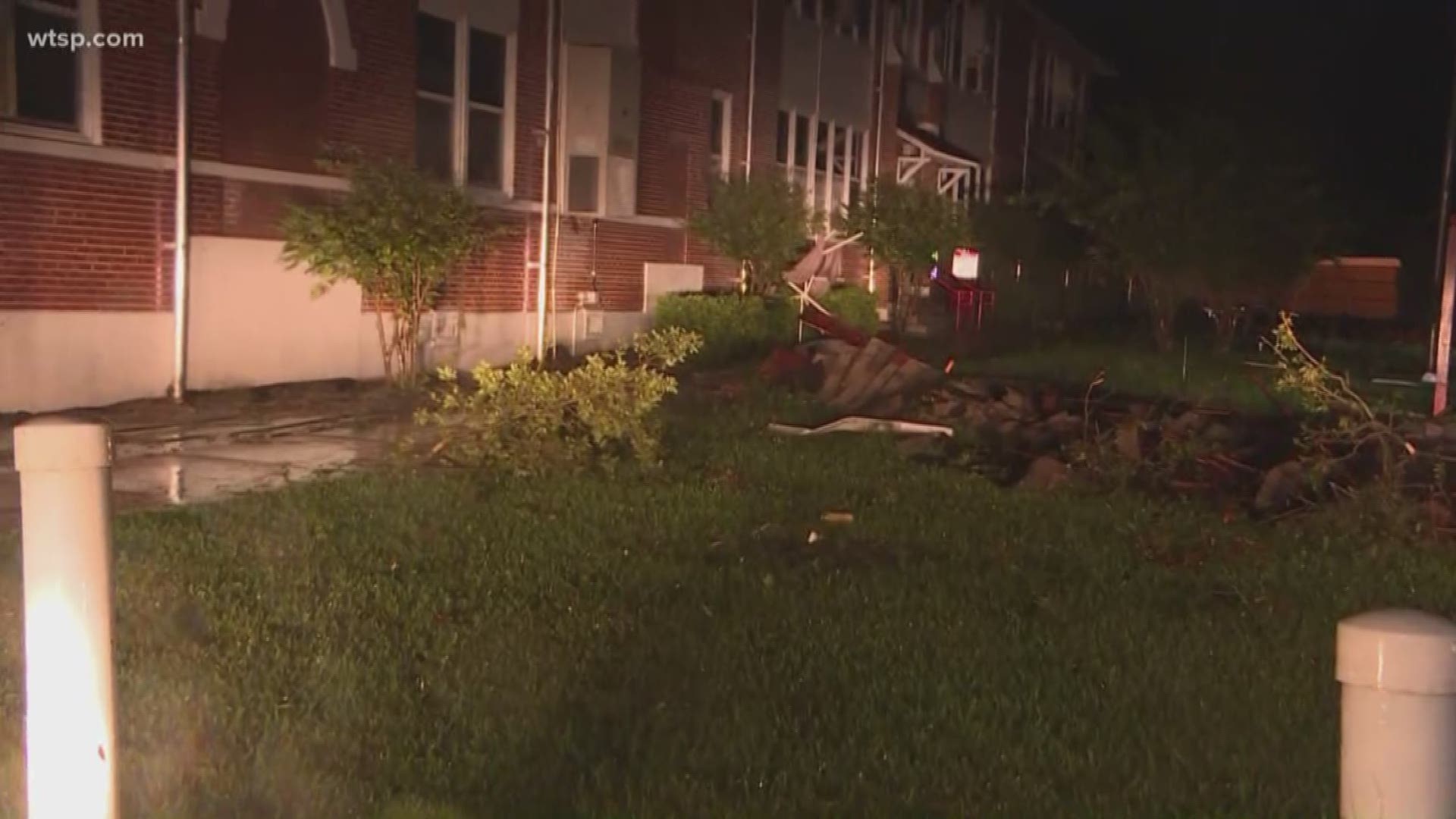TAMPA, Fla. — 1) An unusual tornado?: The strongest tornado the Tampa Bay area saw Friday night, near Kathleen, in Polk County, was an EF2 tornado on the Enhanced Fujita Scale. Florida ranks very high in the country in terms of the number of tornadoes it sees each year. However, most of Florida's tornadoes are of the weaker variety. Florida ranks among the lowest in tornadoes categorized as severe or extremely dangerous, more often rated EF0 or EF1.
2) Strongest tornado in Florida history: The two strongest tornadoes in Florida history have occurred in Polk County. According to the Florida Climate Center at FSU, a tornado produced F4 damage on the then Fujita scale on April 15, 1958, in Polk County, becoming one of only two F4 tornadoes recorded in the state of Florida. The second F4 tornado occurred on April 4, 1966, in Polk County near Gibsonia.
3) Florida sees more tornadoes than most states: Did you know Florida ranks third nationally for the average number of tornadoes on an annual basis,? It only trails behind top-ranked Texas and runner-up Kansas. Typically, June is the biggest month for tornadoes in Florida. The most powerful usually strike in spring.
4) Tornadoes and tropical storms: Tornadoes typically become a higher risk in the right front quadrant of a tropical storm or hurricane. With Tropical Storm Nestor moving northeast into the panhandle, Tampa Bay was in this zone. This is why 10News meteorologists talked about this threat days before the storm approached.
5) Florida is number 1: Florida has the dubious distinction of having a higher frequency of tornadoes per 10,000 square miles than any other state, including Oklahoma!
6) Tampa Bay is a hot spot: The coast between Tampa Bay and Fort Myers has a particularly high incidence.
7) How tornadoes are rated: Friday night's strongest tornado appears to have been an EF2. The intensity of a tornado can be determined only after the event when survey teams from the National Weather Service can examine structural damage. After the survey is complete, the tornado is given this value from the Fujita Scale.
8) The Fujita Scale: The Fujita Scale was developed by Dr. T. Theodore Fujita and categorizes tornadoes on the basis of their intensity and area. The scale relates a tornado's damage to the fastest quarter-mile wind speed at the height of the damaged structure to determine its intensity.
9) Today's enhanced scale: Today, meteorologists use the Enhanced Fujita Scale. This enhanced scale helps determine the intensity of a tornado when there is no structural damage (as can happen when, for example, a tornado passes through a cornfield).
The Enhanced Fujita Scale:
EF-0 Winds: 65-85 mph. Some damage to chimneys; branches have broken off trees; shallow-rooted trees pushed over; damaged signboards.
EF-1 Winds: 86-110 mph. Surfaces peeled off roofs; mobile homes pushed off foundations or overturned; moving autos pushed off roads.
EF-2 Winds: 111-135 mph. Considerable damage. Roofs are torn off frame houses; mobile homes demolished; boxcars pushed over; large trees snapped or uprooted; light object missiles generated.
EF-3 Winds: 136-165 mph. Roof and some walls torn off well-constructed houses; trains overturned; most trees in forests uprooted Well-constructed houses leveled; structures with weak foundations blown off some distance; cars thrown and large missiles generated.
EF-4 Winds: 166-200 mph. Well-constructed houses leveled; structures with weak foundations blown off some distance; cars thrown and large missiles generated.
EF-5 Winds: 200+ mph. Strong frame houses lifted off foundations and carried considerable distances to disintegrate; automobile sized missiles fly through the air in excess of 100 meters; trees debarked; steel-reinforced concrete structures badly damaged.
10) Florida's deadliest tornado: The deadliest tornado in Florida history occurred on February 22, 1998. It was an F3 that first touched down one mile south of Intercession City, just 11.7 miles from Disney World. The tornado moved northeast at 45 mph and ripped through the town of Kissimmee killing 25 people. The hardest-hit areas were the Morningside Acres mobile home community and the Ponderosa Recreational Vehicle Park. In all, eight people were killed in recreational vehicles, 15 in mobile homes, and 1 in an automobile. The tornado continued northeast and moved into Orange County six miles north of St. Cloud. 150 people were injured and more than 1,000 structures were damaged or destroyed.
What other people are reading right now:
FREE 10NEWS APP:



